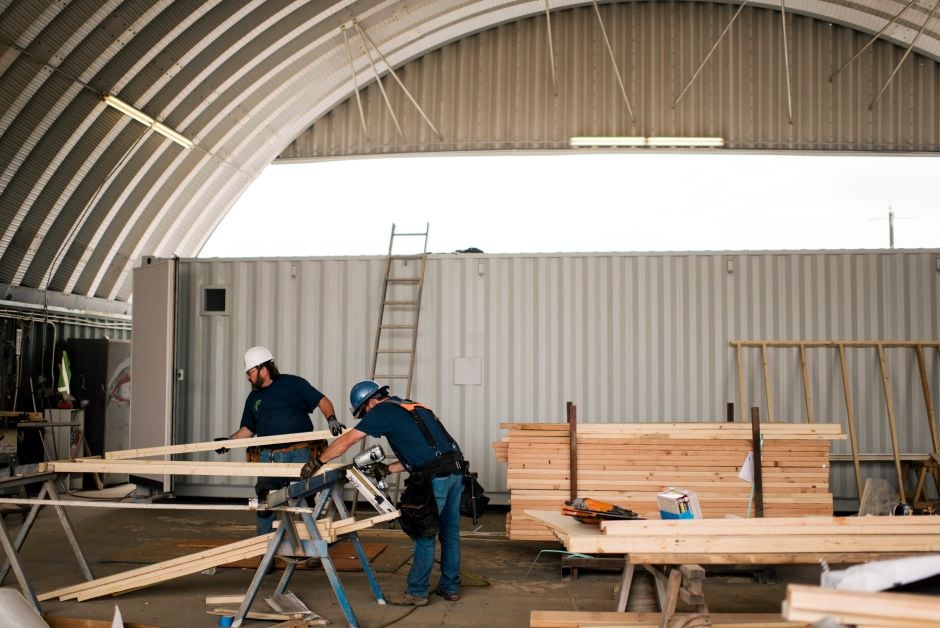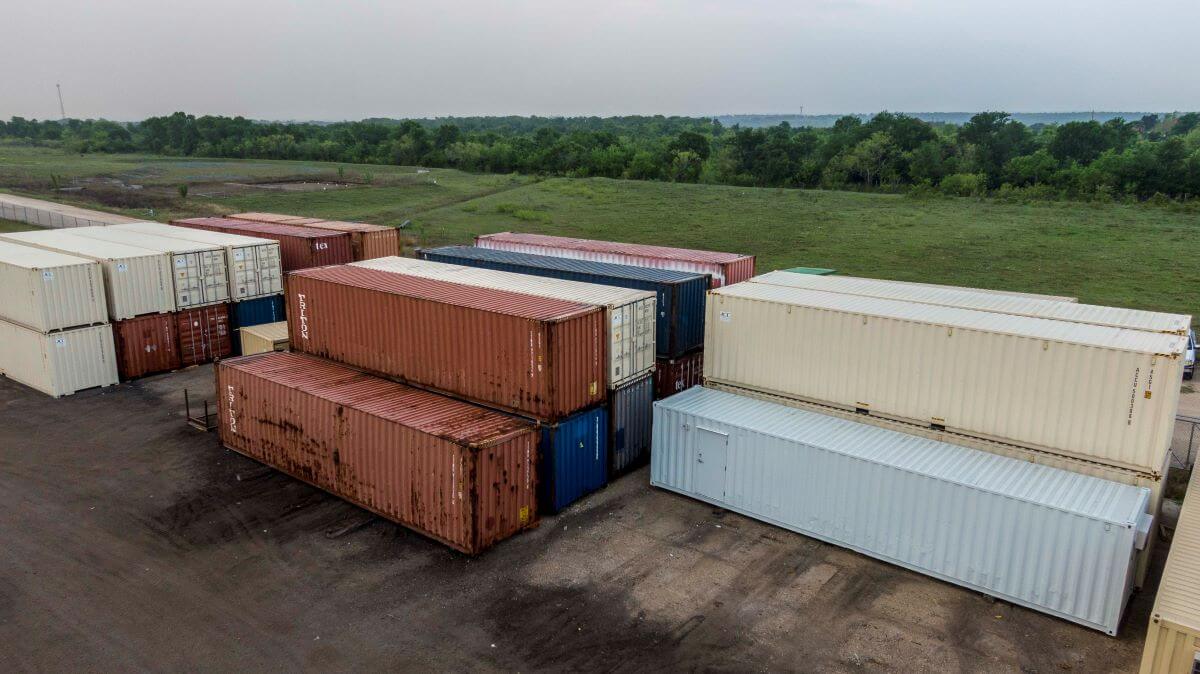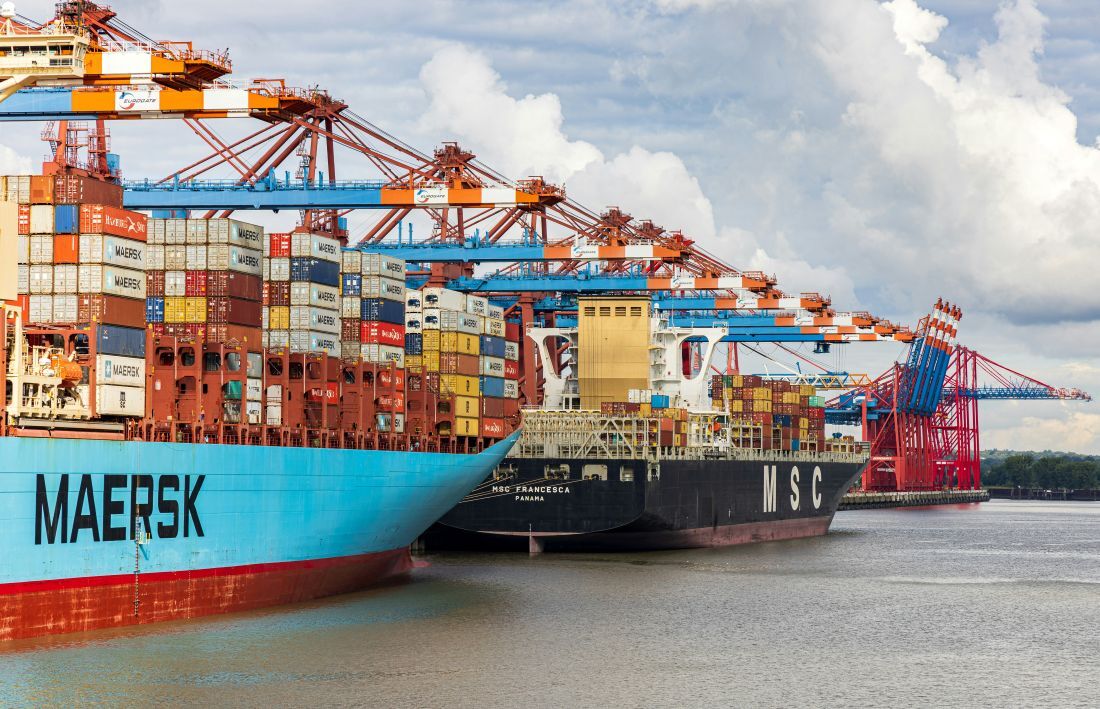Shipping Container History: Transportation to Container Workspaces
 Becca Hubert | May 15, 2024
Becca Hubert | May 15, 2024

Have you ever wondered how shipping containers evolved from plain steel boxes to the wide range of workspace, storage, and industrial solutions they are today? This shift in use - something we call containerization - all started with American entrepreneur Malcolm McLean.
In his book, The Box: How the Shipping Container Made the World Smaller and the World Economy Bigger, Mark Levinson sums up the shift well:
“In 1956, the world was full of small manufacturers selling locally; by the end of the twentieth century, purely local markets for goods of any sort were few and far between.”
1950s: The History of Shipping Containers Begins
In 1956, McLean had a light bulb moment. His idea was to enclose goods traded into sturdy containers. This proved a major breakthrough for the shipping industry.
Essentially, McLean revolutionized the way goods were transported across the globe. The efficiency and standardization of containers that followed eased friction in international trade and reduced the cost to transport goods to the U.S.
This system was so widely adopted that anywhere from 17-25 million shipping containers are in circulation across the world today. Now, an entire global infrastructure exists to move containers from Point A to Point B by ship, truck, train, or airplane.

1960s: ISO Establishes Standard Container Sizes
As the worldwide shipping industry embraced McLean’s invention, the International Organization for Standardization (ISO) stepped in to establish the standard sizes for containers in 1961. This included the well-known 20-foot and 40-foot shipping containers that are most commonly used today.
1980s: Solution for Theft and Ideas for Alternative Structures
When industrial jobsite theft was an issue in the early 80s, a group of entrepreneurs recognized ISO shipping containers could be repurposed for storage. Why? Containers are an ideal storage solution for three main reasons:
- Containers are readily available.
- Containers are affordable.
- Containers’ built-in durability and portability could seamlessly fit in as a secure storage solution.
This decade also saw the first idea for container structures. Phillip C Clark filed a patent in 1987 for plans for constructing housing and shelters out of containers.
Early 2000s: More than Storage
Containers gained more interest as architectural pieces in the early 2000s. Much of this interest was driven by motivation for sustainable buildings and affordable housing solutions. Architects and designers started to experiment with containers as building blocks for homes, offices, and more.
Falcon Structures was founded in 2003 by Stephen Shang and Brian Dieringer. They noticed the emerging market where containers could be modified and used as building elements. The partners gradually invested more resources in the manufacturing and customization side of their business.

2010 - Present: An $85 Billion Dollar Industry
The use of shipping containers in construction has become a global phenomenon. The worldwide modified shipping container market size was estimated at 85.3 billion USD in 2022, and it’s expected to grow to 147.6 billion by 2030.
While many think of tiny homes as the primary use of containers in construction, containers are becoming more recognizable as workspaces, food and entertainment structures, and even bathrooms.
Falcon has seized the unique opportunity to pioneer the manufactured container-based structure industry. With the modular nature of containers, their scalability, and the quicker turnaround time they offer over traditional construction, it’s no wonder the modified container industry has transformed and grown so much over the last 68 years.
Want to discover how your business needs could be solved by a container structure? Our industry-leading team can help! Call us at 512-131-1010 or email us at Sales@FalconStructures.com.
SUBSCRIBE
- Shipping Container Modifications
- How-Tos
- Workspace
- Commercial Construction
- Multi-Container Buildings
- Storage Solutions
- Industrial Enclosures
- Bathrooms & Locker Rooms
- Oil & Gas
- Climate Control
- Green Building
- Living Space
- Industry Insight
- Military & Training Facilities
- Water Treatment Solutions
- Energy
THINK INSIDE THE BOX®
WITH OUR BLOG
Get everything from shipping container basics, to detailed how-tos and industry news in our weekly blog. Stay inspired and subscribe!
RELATED BLOGS

How to Secure a Shipping Container: Peace of Mind with Container Lock Systems
Marissa Morin | Apr 6, 2022 | 3 min read
READ MORE

Are Shipping Containers Waterproof?
Becca Hubert | Nov 27, 2024 | 4 min read
READ MORE

Where Do Shipping Containers Come From?
Becca Hubert | Jul 2, 2025 | 3 min read
READ MORE
